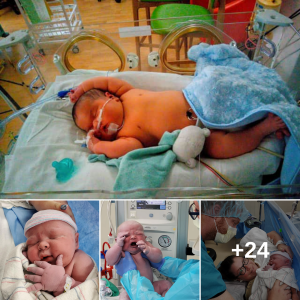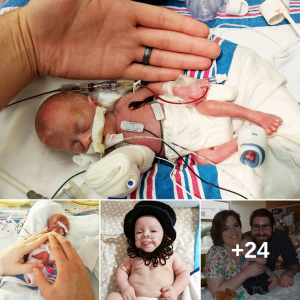I’m a celebrity-magazine junkie, so I consider myself an expert when it comes to reading the body language of all those A-listers. But when it comes to interpreting my own 3-month-old’s body language, my skills aren’t quite so sharp. Despite the fact that Addy is my third child, I’m often hopeless at reading her hiccups, head bobs, and odd hand positions. Yesterday, for example, I assumed that her intense sucking on her fists meant that she was hungry, so I fed her until she spit up all over her shirt and mine.
Tuning in to your child’s gestures is crucial, especially before they can speak. “Baby behavior definitely conveys messages that tell you what your child needs,” says J. Kevin Nugent, Ph.D., director of the Brazelton Institute in Boston and author of Your Baby Is Speaking to You. “Being able to read and respond will make your baby happier, as well as help you learn a lot about her personality and temperament.”
For the parents like me who get lost in translation, infant pros offer insight into interpreting some common baby moves. Use these communication “clues” to understand your own little VIP.
1. Arching Back
A toddler may make this move as an act of rebellion, but when infants unleash the arch, it may be a reaction to pain. In that case, heartburn is the most likely culprit, says Ari Brown, M.D., author of Baby 411.

Your move
If your baby arches their back in the middle of feeding and cries or spits up excessively, it could be a sign of reflux or gastroesophageal reflux disease (GERD), a condition in which the backward flow of acid from the stomach irritates the esophagus.
“As the stomach acid comes up into the esophagus in the middle of the chest, a baby will arch their back to try to relieve the discomfort,” Dr. Brown explains. If your baby’s arched back doesn’t seem related to feeding, it might mean that they are frustrated and could simply use some comforting.
If you suspect your baby may be dealing with GERD or acid reflux, be sure to talk to their pediatrician. They may recommend thickening your baby’s formula or milk and elevating their head after meals. As a last resort, they might try putting your baby on medication.
2. Constant Kicking
You might have a future soccer player or Rockette, but what’s behind the kiddie kick line right now? It depends on how they are acting otherwise. “If your baby seems happy and smiley, it’s probably a sign that they want to play,” says Claire McCarthy, M.D., assistant professor of pediatrics at the Harvard Medical School at Children’s Hospital Boston. But if your baby is fussy or crying, it’s likely an indication that something’s bothering them.

Your move
“It could be anything from gas to a dirty diaper to a cramped car seat, so do a quick once-over to see what might be bugging her,” says Dr. McCarthy. Just know that some babies kick their legs simply because they can. If you determine nothing is wrong, it might be a good time to start researching soccer camps, just sayin’.
3. Head-Banging
Seeing your 10-month-old using their head like a drumstick to methodically bang it on the hardwood floor or against the bars of their crib is alarming. But a lot of little ones do this routinely without appearing to cause themselves any pain. But, ouch, why?
“Babies find the rhythmic back-and-forth motion soothing,” says Catherine Nelson, M.D., a pediatrician at Santa Clara Valley Medical Center in San Jose, California.
Your move
Don’t completely ignore it. “If your baby bangs their head for long periods of time instead of engaging with others or playing with their toys, then you should bring it to your pediatrician’s attention at a checkup,” says Dr. Brown. Bear in mind, most kids give up this behavior by age 3, so if the behavior is persisting past then, it’s another good indication to check in with a doctor.
4. Grabbing Their Ears
Don’t immediately assume that tugging equals an ear infection. “Many parents jump to that conclusion, but most of the time your baby has just realized that she has ears,” says Dr. Nelson. Indeed, Seattle Children’s Hospital explains that children who have ear-pulling as their only symptom rarely have an ear infection. (The ear infection symptoms that you should watch for, however, include fever, stuffy nose, and trouble sleeping at night.)

Your move
Cheer your baby on for locating this body part, but keep your eye on it. “Sometimes babies will pull on their ears when they’re teething, particularly when the 1-year molars are coming in,” says Dr. Brown. If that seems to be the case, bring on the teething rings and extra snuggles to help make them more comfortable.
5. Clenched Fists
Does your baby seem ready to rumble? “Most newborns hold their hands in this position at rest,” says Dr. Brown. Your infant isn’t able to do much more yet, because finger and hand movement requires a more developed nervous system and more complex brain function.
Babies usually start to open up their hands by 8 weeks and begin reaching and grabbing by 3 to 4 months. But clenched fists can sometimes be a sign of stress or even hunger, says S. Michelle Long, a certified baby nurse in New York City. “I find that when babies are very hungry, they tense up all over.”
Your move
For babies under 3 months, be sure your little one isn’t hungry or fussy. You could also try introducing toys, like a soft rattle to help them hold. If your child’s tendency to clench their fists persists after 3 months, check in with their doctor.
6. Scrunched-Up Knees
No, your kid is not doing an ab workout. “This position is usually a sign of abdominal discomfort, either from having gas, passing a bowel movement, or being constipated,” says Dr. Nelson. Not to give TMI, but your baby is most likely doing exactly what you do behind the closed door of the bathroom.
Your move
Try to ease their discomfort. If gas seems to be the issue, make sure you burp your baby throughout feedings. If you’re breastfeeding, check your own diet for common gas culprits such as broccoli or beans.
If you think constipation is a problem (which can occur when babies transition from breast milk to formula or when they start solids around 6 months), check with your pediatrician. Their recommendations will depend on your infant’s age and overall health.
7. Arm Jerks
Here’s the scene: Your drowsy-yet-still-awake little one is perfectly primed for naptime. As you lower them gently into the crib, their arms flail out to the sides, startling them so they’re wide-eyed—and wide awake. Grrrr.
“This is a typical reflex for newborns,” says Dr. McCarthy. In fact, it even has a scientific name: the Moro reflex. The reflex causes an infant to suddenly throw their arms out to the sides and then quickly bring them back toward the middle of the body whenever they are startled by a noise, bright light, or sudden movement.
Your move
This reflex, which usually disappears after 3 or 4 months, is often a response to a sudden loss of support, often when an infant feels like they are falling, says Dr. Nelson. It’s normal, but you can avoid the startle-to-wake reflex by swaddling them for naps and bedtime.




